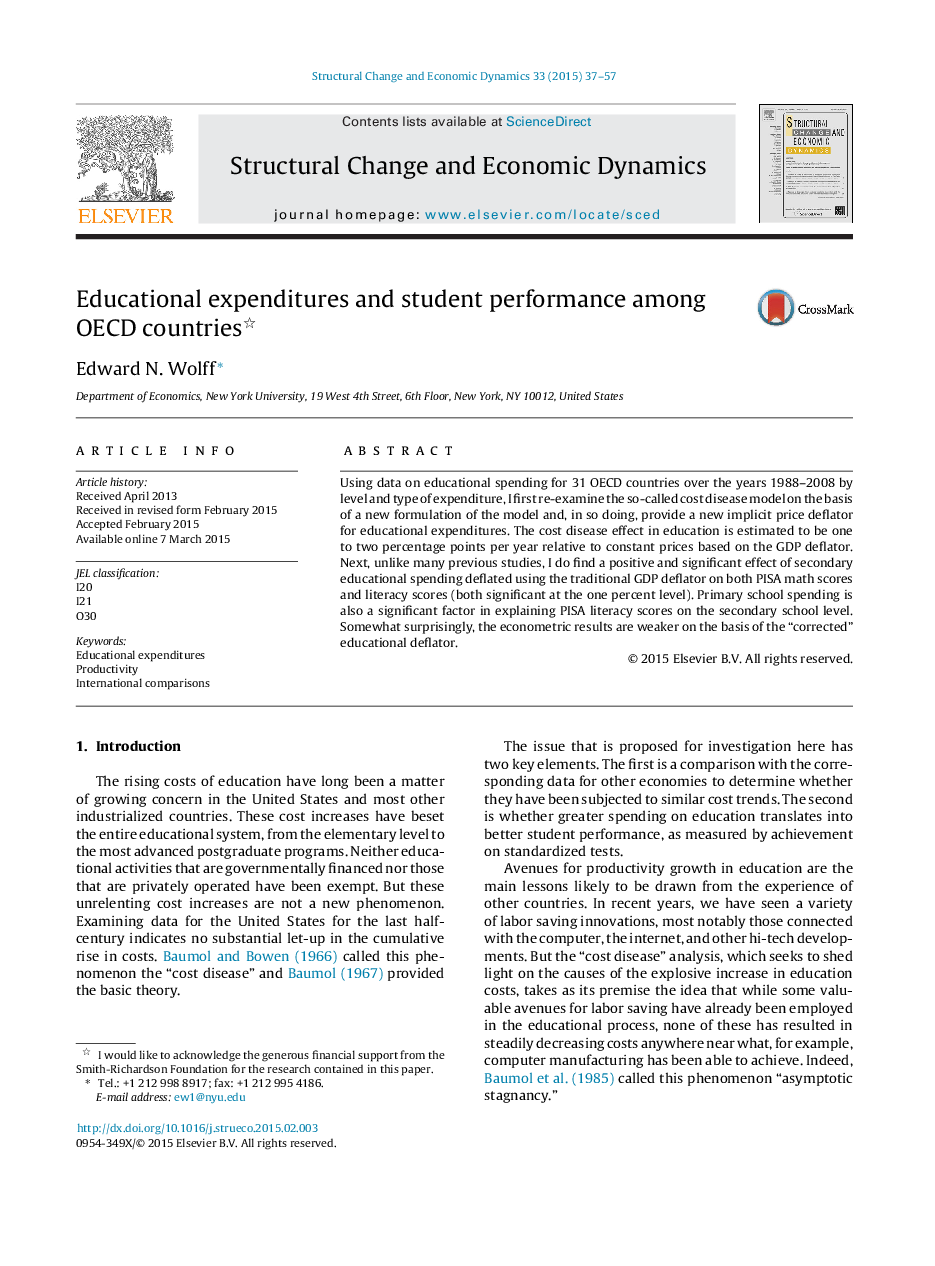| Article ID | Journal | Published Year | Pages | File Type |
|---|---|---|---|---|
| 988166 | Structural Change and Economic Dynamics | 2015 | 21 Pages |
•The paper first provides a new formulation of the so-called cost disease model.•It then derives a new implicit price deflator for educational expenditures.•The cost disease effect in education is estimated to be one to two percentage points per year.•It also finds a positive and significant effect of secondary spending on PISA scores.•The econometric results are found to be weaker on the basis of the “corrected” educational deflator.
Using data on educational spending for 31 OECD countries over the years 1988–2008 by level and type of expenditure, I first re-examine the so-called cost disease model on the basis of a new formulation of the model and, in so doing, provide a new implicit price deflator for educational expenditures. The cost disease effect in education is estimated to be one to two percentage points per year relative to constant prices based on the GDP deflator. Next, unlike many previous studies, I do find a positive and significant effect of secondary educational spending deflated using the traditional GDP deflator on both PISA math scores and literacy scores (both significant at the one percent level). Primary school spending is also a significant factor in explaining PISA literacy scores on the secondary school level. Somewhat surprisingly, the econometric results are weaker on the basis of the “corrected” educational deflator.
